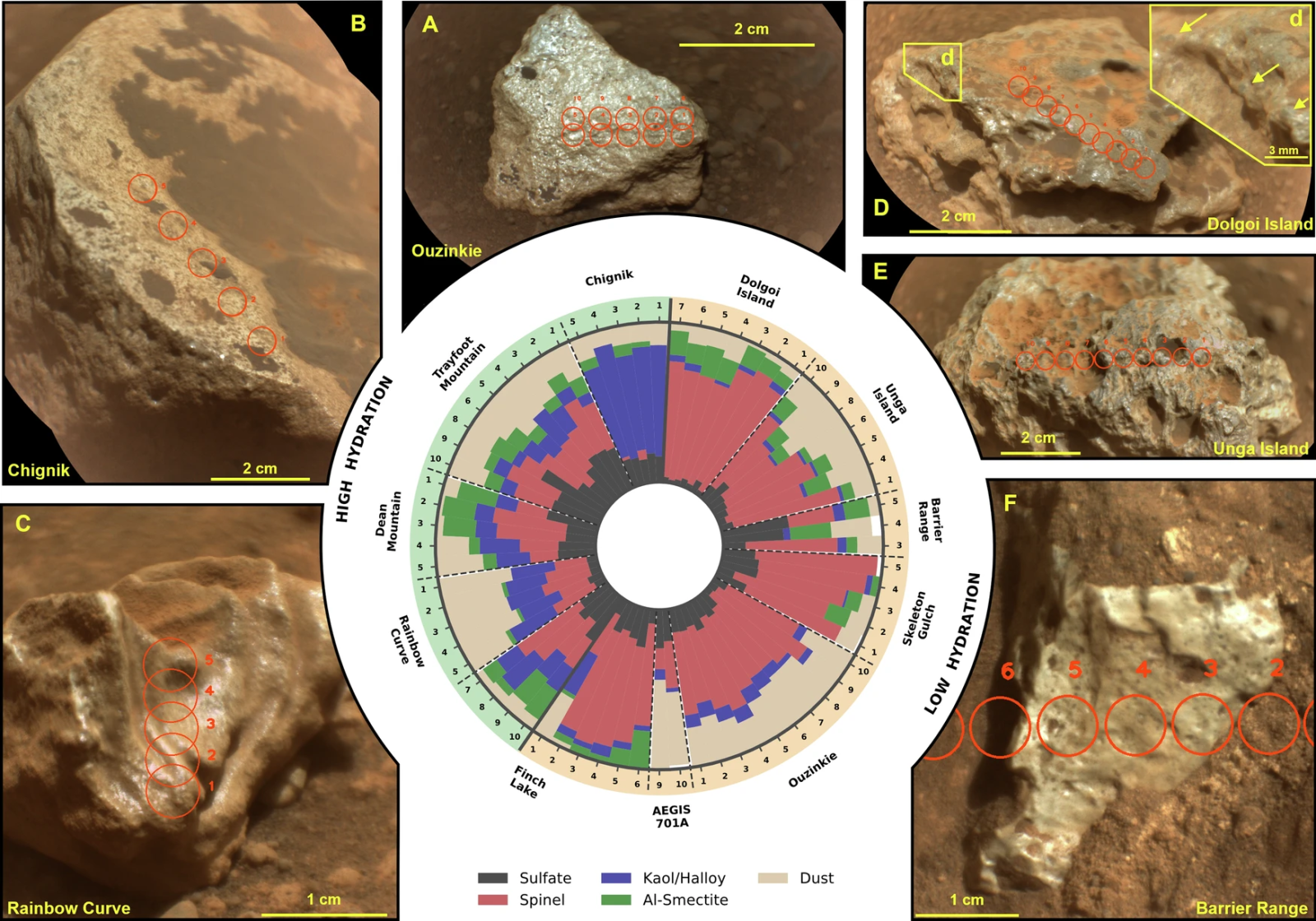A tropical climate on Mars? 💧
Published by Cédric,
Article author: Cédric DEPOND
Source: Communications Earth & Environment
Other Languages: FR, DE, ES, PT
Article author: Cédric DEPOND
Source: Communications Earth & Environment
Other Languages: FR, DE, ES, PT
Follow us on Google News (click on ☆)
These findings, published in Communications Earth & Environment, shed light on a period when Mars may have been much warmer and wetter. Scientists are now exploring these rocks to understand their origin and their connection to the planet's past habitability.
An unexpected discovery
The pale rocks spotted by Perseverance in Jezero Crater initially seemed unremarkable. Their light color and surface dispersion distinguished them from the rock formations typically observed on Mars. However, their analysis revealed a unique composition, marked by a high concentration of kaolinite.
This mineral, typical of warm and humid environments on Earth, suggests that Mars experienced similar conditions several billion years ago. The rocks, referred to as "float rocks," are not part of the local bedrock, indicating that they were transported by fluvial processes or meteorite impacts.
The presence of kaolinite, associated with minerals like spinel, raises many questions. Researchers are trying to understand how these rocks formed and what they reveal about the history of water and climate on Mars. This unexpected discovery opens new perspectives on the past habitability of the Red Planet.

a) Image of Ouzinkie showing a bright sheen (scam02691).
b) Image of Chignik with dark and dull grains in a light gray matrix (scam01681).
c) Image of Rainbow Curve illustrating a discontinuous and anastomosed stratified texture (scam01777).
d) Image of Dolgoi Island with yellow arrows pointing to dark green grains, candidates for spinel (~1 mm, scam01657).
e) Image of Unga Island showing a glassy and splattered texture with large cavities (up to 4 cm, scam01676).
f) Image of Barrier Range presenting a smooth and aphanitic surface with small spherical cavities sometimes filled with a dark material (scam02554).
In the center, iris diagram representing the mixing coefficients of the modeled targets, classified by mineral families. The sectors correspond to measurement points and the proportions reflect the relative weight of each family in the spectrum.
Kaolinite and spinel: valuable clues
Kaolinite, a clay mineral, is a key marker of warm and humid environments. On Earth, it forms in tropical or hydrothermal conditions, often conducive to life. Its presence on Mars suggests that the planet experienced intense water alteration episodes around 3.8 to 4 billion years ago.
These rocks also contain spinel, a mineral that can form in volcanic or metamorphic situations. Researchers are still unsure whether the spinel resulted from the transformation of kaolinite or served as a base for its formation.
The association of these two minerals provides valuable clues about the past geochemical processes of Mars. Scientists hope that their study will help better understand how water shaped the planet's surface and whether these conditions could have supported microbial life.
A window into past habitability
The presence of kaolinite in Jezero Crater strengthens the hypothesis of an ancient, warm, and wet Mars, potentially habitable. These rocks, witnesses to intense aqueous alteration, suggest that water played a major role in transforming the Martian landscape. Scientists estimate that these conditions could have been favorable for the emergence of microbial life.
Perseverance is currently exploring the edge of Jezero Crater, where satellites have detected similar rocks. These investigations could reveal the origin of these formations and their connection to the history of water on Mars. Researchers also hope to identify traces of hydrated minerals, which could indicate the presence of trapped water in the subsurface.
These discoveries make Jezero Crater a key site for future sample return missions. The kaolinite-rich rocks could contain valuable clues about the past climate and geology of Mars. By studying these samples on Earth, scientists might finally answer the question: Did Mars ever harbor life?
